Hafen Family

Hafen Family 15-acre farm
The HAFEN FAMILY were from Switzerland. They owned a 15-acre farm that produced most of the food needed for the family.
They raised cattle, hay, grain, potatoes and fruits…especially grapes.
They had milk cows and produced the giant cheeses that were famous in Switzerland.

Lake Constance Harbor
HOW DID THE HAFEN FAMILY GET THEIR NAME? Before the Hafen family came to Switzerland they lived in Austria.
They were forced to flee their country and crossed the mountains into Switzerland.
They settled on a cove or HARBOR of Lake Constance. In the German-Swiss language the name HAFEN means HARBOR or haven... a place of refuge and security.
So they took the name Hafen because of the safety they felt.
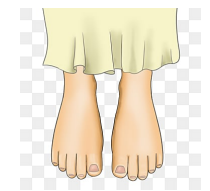
Barbara's Missing Clothes/Shoes
HANS GEORGE HAFEN and his wife Maria lived in Switzerland.
They had two children... Barbara and John George. The missionaries from the Church of Jesus Christ of Latter-Day Saints found the Hafen family.
Barbara was the only one interested in listening to the missionaries.
Her brother and father tried to stop her from meeting with the missionaries by hiding her shoes and clothes, but Barbara convinced them both to be baptized.
Later, all three came to America.

Mock Baptism
After JOHN GEORGE HAFEN was baptized and ordained a Priest he went on a mission and met his future wife, Susette Bosshard.
While he was on his mission he was taken by a mob and dunked in a well trough as a "mock baptism".
The members of the Church of Jesus Christ of Latter-Day Saints were not treated very well in their country.
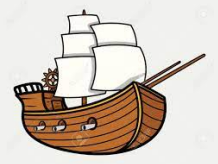
Passage to America
In 1861 the Saints were urged to gather to Zion in America.
Although the HAFEN FAMILY was doing well in Switzerland with land and animals and money, the Gospel meant more to them than all else, so they did not hesitate to sell their property, leave their home and friends and set out for a new land.
The Hafen's were not only able to pay their own passage to America but helped others who were less fortunate so they could come to America with them.
These families later became their neighbors in Utah.
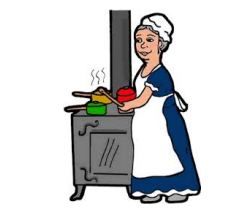
Susette Bosshard Hafen
She married John George Hafen. She met him when he was a missionary in Switzerland.
They were married in Salt Lake City before they came to Santa Clara. She and John G. Hafen had 10 children.
Susette cared for her children while John G. filled 2 more missions.
The Indians loved her because she was always kind to them and often gave them food and clothing.
She could sing and play the organ. Her life was one of charity and unselfishness.
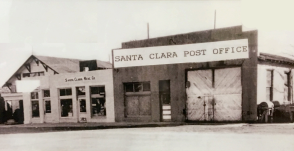
The Santa Clara Merc
It was the first store in Santa Clara with John G. Hafen as the manager.
The business started in a few rooms in John and Susette’s home. Then grew to a small building adjoining their home.
Susette mostly ran the store while John G. was away with other work. He later sold the store to his son, Adolph.
Adolph built a new building which included a service garage, 2 gas pumps and a post office.
Adolph later sold the store to his daughter Ethel and her husband, Horace McArthur.
They hired many young people in the town to work at the Merc. The Merc was then sold to Doug McArthur (Ethel and Horace’s son).
The Merc was in the Hafen family for over 124 years. A favorite place for kids and adults in the community for many years.

John G. Hafen Service
John George Hafen lived a life of service to his community.
He served many missions including a mission back in Switzerland and Germany.
Soon after his return home, he was called to be the first Bishop who was of Swiss Descent.
He served as Bishop of the Santa Clara ward for 28 years.
After he was released, he continued his service at the St. George Temple.
He was a man of honesty, integrity, hard work, courage, faith and he spent many hours in the service of others.
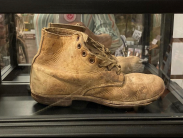
The Great Shoe Mystery
Back in 1930 little ARLO HAFEN was a 7 year old boy in Santa Clara, Utah.
He was lucky to have a pair of shoes that fit him. He preferred to go barefoot like most of his classmates.
One morning after he got to school he took off his shoes and hid them by the outside wall of the school... so he could pick them up later before he went home.
When school was out he quickly went to his secret hiding place only to find his shoes had been pushed back deep inside the walls of the school.
He walked home very slowly trying to think about what he was going to tell his mother.
Many years later when Arlo grew up, he became a teacher and principal at this same school when it was torn down to make room for a new church.
Arlo stood at that same wall when it was knocked down. He reached deep inside and found the very shoe he hid 40 years earlier as a 7-year-old boy.
You can see the shoe at the Santa Clara Museum.